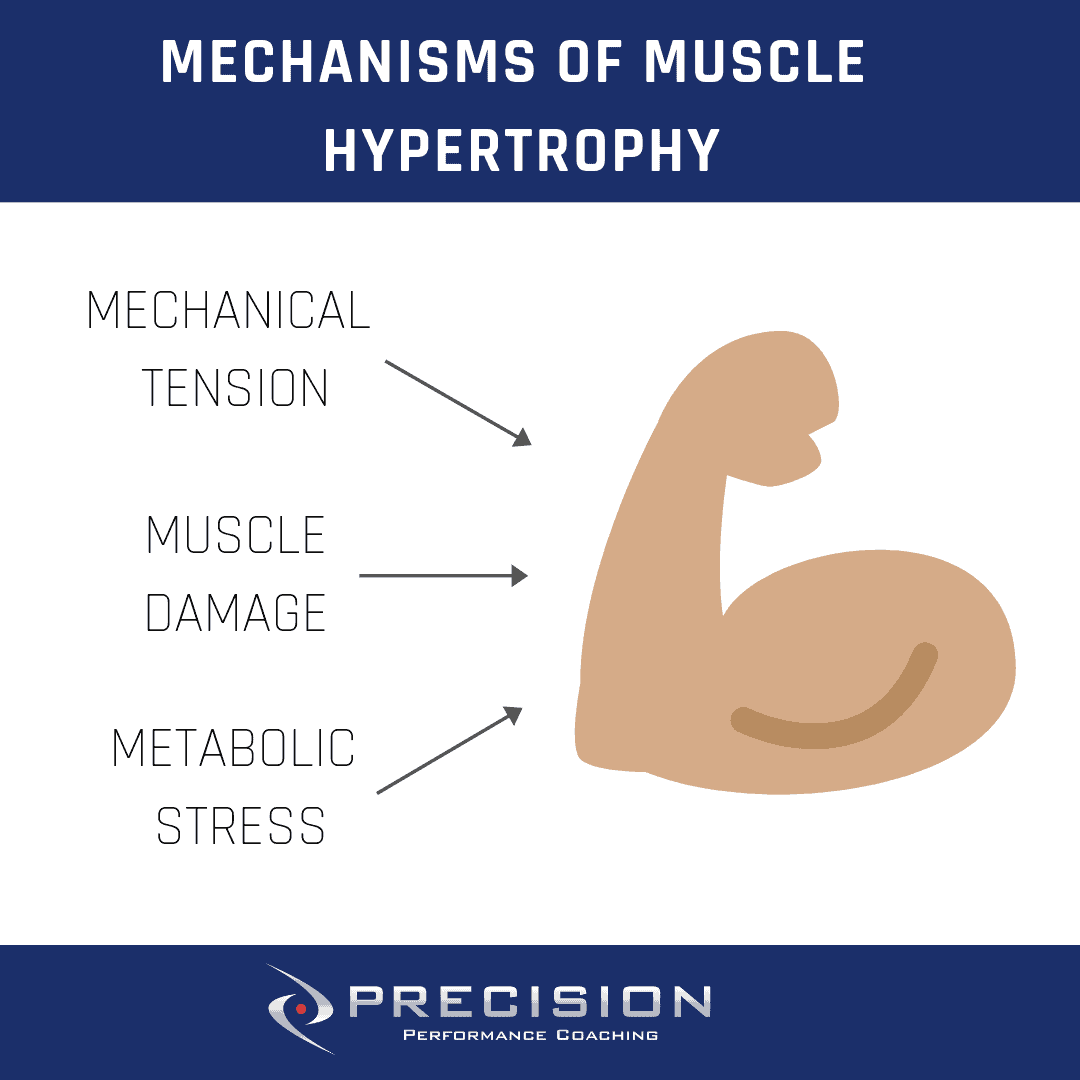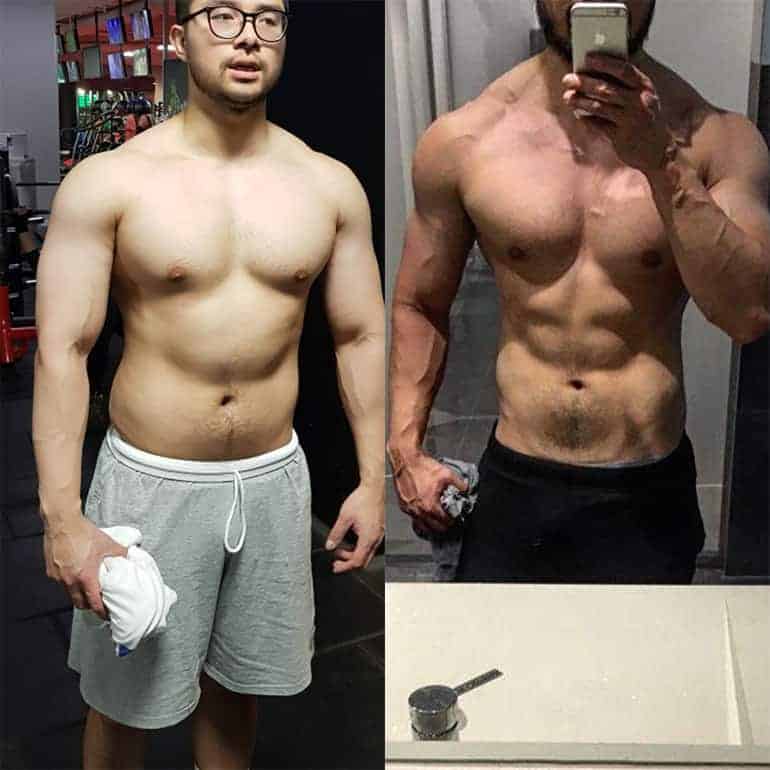
Mechanisms of Muscle Hypertrophy

Today I want to talk to you about muscle hypertrophy, which is the increase in size of muscles.
I’m guessing if you have kept up with my articles you will probably be a little familiar with how progressive overload works to increase muscle size. Let me tell you more about the mechanisms that make this happen.
In my last article I talked about training for my powerlifting competition. In that article I explained that strength is a skill and, like any other skill, to master it you need a lot of purposeful practise. For powerlifting this requires your workout to be centred around the three main lifts – squat, bench and deadlift. When it comes to bodybuilding and hypertrophy however, you need to train differently.
When you are doing an exercise, such as a squat for example, over time your body makes adaptions and you become really good at executing that movement. If you are training for pure strength this is fine, but for hypertrophy when you get to this point it is time to change the stimulus and challenge the body in a new way. I’m a huge advocate for deadlifts, squats and bench press, but just performing these exercises won’t give you the complete muscle development you seek.
Exercise variation drives hypertrophy. For bodybuilders to grow and have a symmetrical physique they need to change up their exercises a lot. This doesn’t just mean different exercises, they also need to change reps, rest time and the volume.
So now you are probably curious on how to program hypertrophy training into your routine…
There are three mechanisms of muscle hypertrophy, which I will go into below:

1. Mechanical tension
Mechanical tension is about the amount of tension that is placed on your muscles, but let’s go a little deeper. In physics, tension is a term used to describe a particular type of force. Newton’s second law is Force = Mass X Acceleration. We can relate this law to weight training, where Mass is the weight we use, Acceleration is the rate of change of speed of the weight we are using, and Force is the mechanical tension on the muscle.
To put this in simple terms, one of the ways to produce muscle growth is exert maximum amount of force (tension) on the body. This is done by lifting heavy weight (mass). Compound movements like deadlifts, squats and bench press are great for this because they allow you to load the body with the most amount of weight compared to an isolation exercise like bicep curls. The more tension going through your body overall, the greater the muscle tension.
With your own programming make sure that you are using the principles of progressive overload with heavier loads lifted over time to provide your body with greater mechanical tension.
2. Muscle damage
First let me explain what muscle damage is. Muscle damage is simply when micro tears and damage occurs to muscle fibres. This damage is what sparks muscle growth. There are many different ways to cause muscle damage, but for this article I’ll cover the two which I think are the most common.
There is research that goes back and forth on this, but one of the most effective ways to cause muscle damage is through eccentric training (down phase of the exercise). Controlling the eccentric part of the movement also creates tension on the muscle.

When it comes to building muscle, momentum is not your friend. Control the eccentric part of the movement otherwise you are missing out on gains. This is also the reason why concentric only movements like cleans, snatches and pushing sleds can be done without producing soreness. There is no eccentric component to the exercise, therefore less muscle damage and easier to recover from and be done more frequently.
3. Metabolic stress (Pump work)
The Pump, everybody loves the pump. I remember Arnold Schwarzenegger saying the pump was liking cumming. I don’t know if I quite agree, but I do think this is another great way to produce hypertrophy.

Pump work, or that burn sensation you feel during training is a swelling response from high repetition work. This cell-swelling is a build-up of metabolites (pyruvate in the absence of oxygen) which is achieved through very high repetitions (20+) and short rest periods. The longer you rest between sets (more than 1 minute), the less metabolic stress you place on the muscle during exercise.
In my experience I have this found the pump method to be the least important out of the three, but it is the most focused on in the gym environment. I have also made the mistake of going to the gym and only searching for the pump. In the process I lost sight of the importance of progressive overload.
Lastly, it’s important to remember that none of these methods will give you the body you want unless you are progressively increasing the load over time.

Like Coach Eugene Teo said, ‘the load is king’. If you don’t create an environment that will cause your body to make adaptations, you won’t change. I you want more information on what I’ve talked about in this article there is paper I highly recommend you read called The Mechanisms of Hypertrophy and their application to resistance training by Doctor Brad Schoenfeld. I would love to hear your thoughts.
Thanks for taking the time to read this article and I hope you are got some useful information which you can apply to your training. If you would like to learn more programming for hypertrophy, feel free to contact us. Alternatively, if you’d like to learn more about the services and training and nutrition programs we provide, please find more information here.
Want a free E-book?

Get your free copy of the Beginners Guide to Performance e-book and start your training journey today!
recent posts
Join Our Mailing List
Sign up and get your free copy of the Beginners Guide to Performance e-book to start your training journey today!
Ready to break through plateaus & get real results?
Contact us now to find out how we can help you take your training and phyique to the next level.


